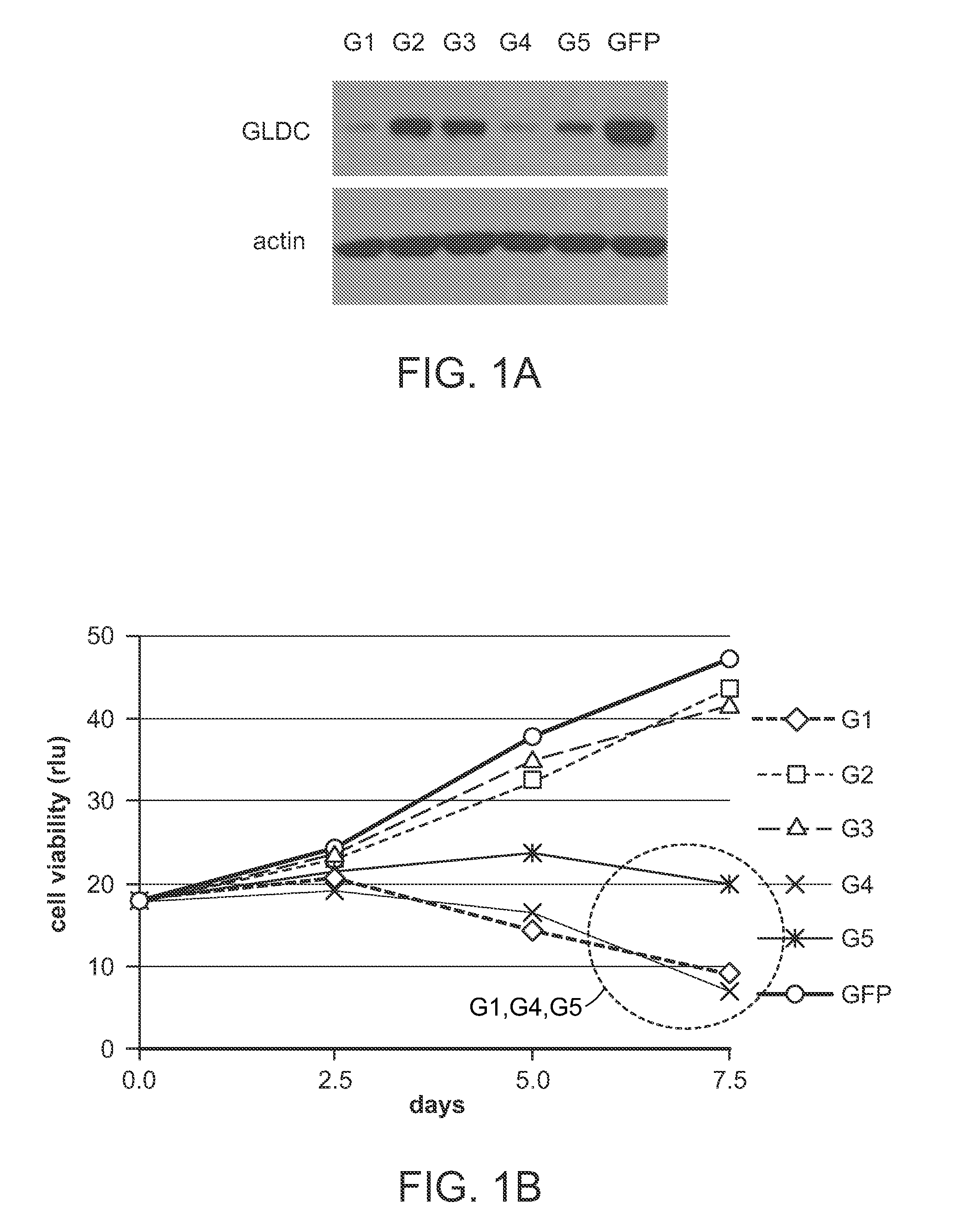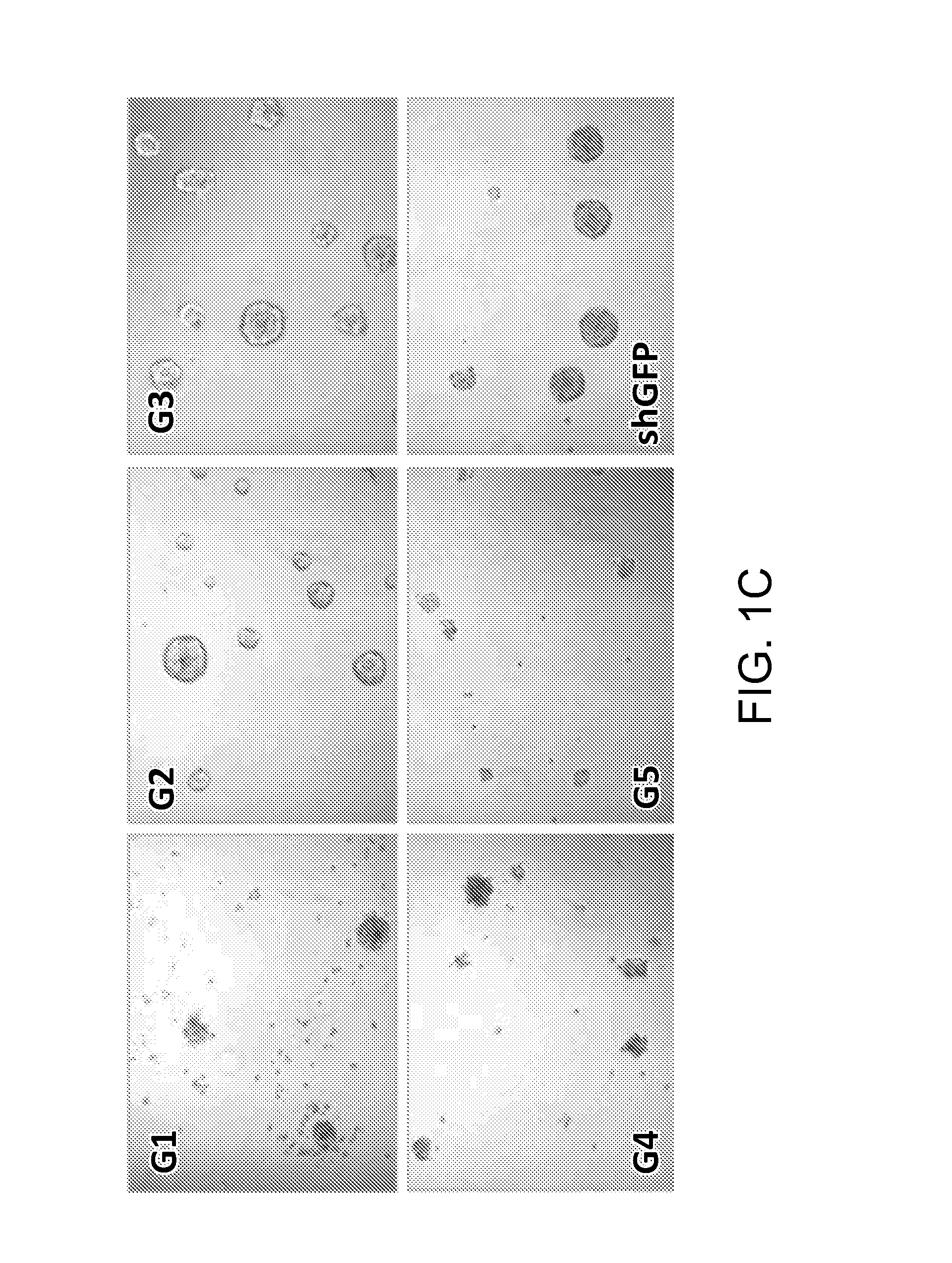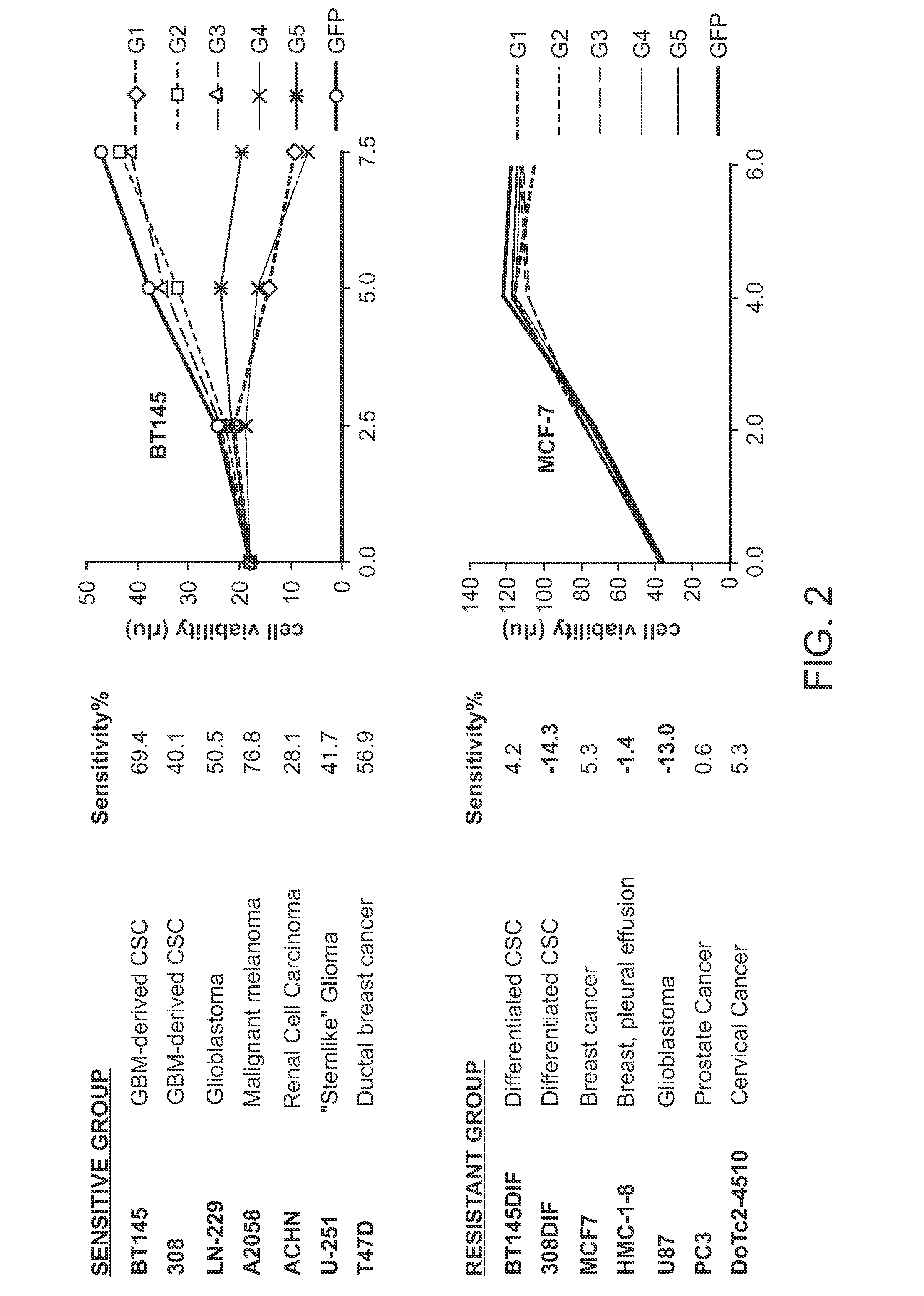Inhibition of the glycine cleavage system for treatment of cancer
a glycine cleavage and cancer technology, applied in the direction of drug composition, biological material analysis, dna/rna fragmentation, etc., can solve the problem that many tumors remain difficult to trea
- Summary
- Abstract
- Description
- Claims
- Application Information
AI Technical Summary
Benefits of technology
Problems solved by technology
Method used
Image
Examples
example 1
shRNA-Mediated Knockdown of GLDC is Toxic to GBM Stem Cells
[0269]Cancer cells frequently display changes in various metabolic activities which play a role in supporting their transformed state. For example, many types of cancer cells employ increased glycolysis through altered pyruvate kinase isoform expression, which may allow glucose metabolites to be preferentially incorporated towards biomass in a manner conducive to rapid growth (1, 2). Recent studies report that mutations in the metabolic enzyme isocitrate dehydrogenase (IDH1) may drive carcinogenesis in certain gliomas and acute myeloid lymphomas (3, 4). Mutations in the metabolic enzyme L-2-hydroxyglutarate dehydrogenase may predispose to GBM or medulloblastoma (5, 6).
[0270]While a wide range of metabolic reactions occur in a cancer cell, we hypothesized that amino acid catabolism pathways may be particularly promising targets for cancer therapy for a number of reasons. A set of congenital disorders, such as phenylketonuria ...
example 2
shRNA-Mediated Knockdown of GLDC is Toxic to GBM Stem Cells
[0272]We used lentivirus-delivered expression of shRNAs directed against GLDC to examine the effect of GLDC knockdown on the GBM stem cell (GBM-SC) line BT145. BT145 cells were either infected with a lentivirus expressing hairpins targeting GLDC (G1 to G5) or a control hairpin targeting GFP. As shown in FIG. 1A, Western blotting for GLDC demonstrates strong suppression of GLDC expression for hairpins G1, G4, and G5 but not for G2 or G3. When cell viability was measured using a ATP assay, we found that shRNAs G1, G4, and G5 significantly impaired cell viability relative to GFP control hairpin, whereas shRNAs G2 and G3 did not (FIG. 1B). Differences between G1, G4, and G5 to the GFP control were each statistically significant at 5 days and 7.5 days (p<0.05) (error bars not shown for clarity).
[0273]The morphology of BT145 neurospheres following GLDC knockdown indicated toxicity. As shown in FIG. 1C, shRNA G2, G3, and GFP infect...
example 3
Different Tumor Cell Lines are Either Sensitive or Resistant to shRNA-Mediated Knockdown of GLDC
[0276]We expanded our analyses to examine multiple cell lines including both non-differentiated GBMSCs and GBMSCs which were differentiated via addition of serum to the media, and various cell lines derived from GBM and other cancer types. We found that each cell type either responded very strongly to GLDC knockdown, or not at all (FIG. 2), thus dividing all cell lines tested into a GLDC-knockdown-sensitive or insensitive group. This pattern did not follow cancer type; for example, both GLDC knockdown sensitive and insensitive examples of GBM derived and breast cancer derived lines were found.
PUM
| Property | Measurement | Unit |
|---|---|---|
| Time | aaaaa | aaaaa |
| Level | aaaaa | aaaaa |
Abstract
Description
Claims
Application Information
 Login to View More
Login to View More - R&D
- Intellectual Property
- Life Sciences
- Materials
- Tech Scout
- Unparalleled Data Quality
- Higher Quality Content
- 60% Fewer Hallucinations
Browse by: Latest US Patents, China's latest patents, Technical Efficacy Thesaurus, Application Domain, Technology Topic, Popular Technical Reports.
© 2025 PatSnap. All rights reserved.Legal|Privacy policy|Modern Slavery Act Transparency Statement|Sitemap|About US| Contact US: help@patsnap.com



